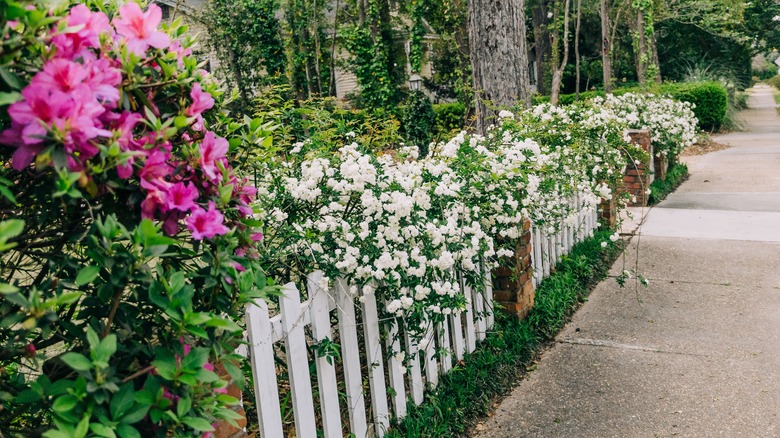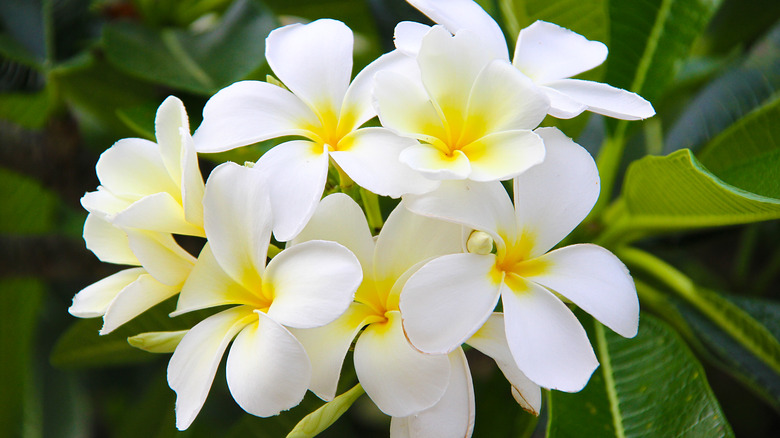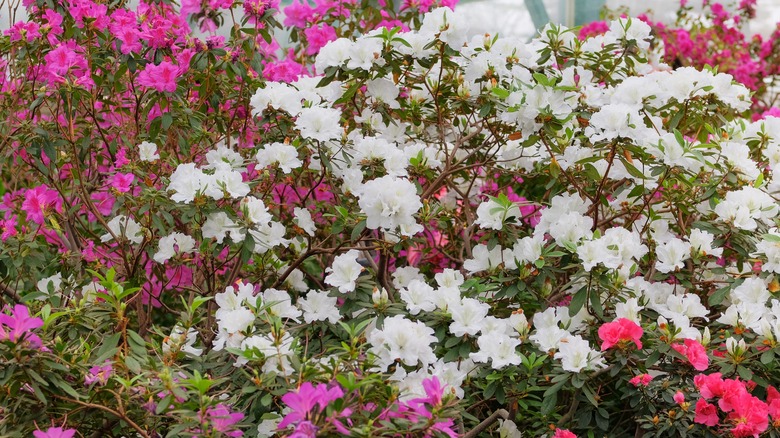Why Azaleas And Gardenias Are A Perfect Pair In The Garden
Few plants can bring the wow factor the way flowering shrubs can. For southern gardeners, one of the most perfect blooming shrub pairings is azaleas and gardenias. Now, with new and hardier varieties of these flowers available, even those who live in areas as cold as USDA Growing Zone 7 can enjoy this beautiful and practical combination. There are two main reasons why these shrubs are a match made in garden heaven: first, they look great together throughout the year, and second, they need similar pH levels and water and light amounts.
Gardenias, also called cape jasmines, and azaleas make great companion plants, meaning that they can benefit from being grown near one another. This will simplify your gardening routine, as you'll be able to give both the plants the same amounts of water and fertilizer to help them thrive. Further, by adding shade-tolerant annuals like begonias and coleus to your landscape as well, you can create a vibrant garden made of diverse plants that all have similar needs.
Azaleas and gardenias can bring beauty to gardens year-round
With azaleas generally blooming in spring and gardenias blooming primarily in mid to late spring through the summer, planting these shrubs together gives you months of fragrant flowers in your landscape. Additionally, encore azaleas even have a second flush of blooms in late summer, so planting this type will give you even more flowers to enjoy. Gardeners thinking about winter interest will also find plenty of reasons to love this combo. Gardenias are evergreen with distinctive and elegant leaves, whereas azaleas can be either deciduous or evergreen, depending on the cultivar. If you choose to use two types of evergreens, you'll have beautiful foliage year-round when planting them together.
Both these shrubs come in a variety of sizes, with gardenias generally ranging from 3 to 8 feet tall and azalea cultivars ranging in size from just 2 feet to as large as 10 feet. Gardenia flowers are generally shades of white or yellow, while azaleas can have white, pink, purple, or even orange flowers depending on the cultivar. Therefore, regardless of how much space you have or what your garden's color scheme is, there's likely a flowering shrub combination that's a perfect fit.
Azaleas and gardenias have similar care requirements
The brilliant pairing of azaleas and gardenias isn't just about aesthetics. They're also a practical combination thanks to their similar needs. These plants both flourish in part sun and enjoy filtered light. Azaleas and gardenias also have similar watering needs, with both plants requiring regular watering but being vulnerable to damage if they sit in overly-wet or poorly-draining soil. Therefore, you can give them both the same amount of water, thereby simplifying your gardening routine.
Both members of the power couple also require fertile and acidic soil to grow their best. Azaleas need soil that is quite acidic, with a pH level that's between 4.5 and 6.0. Gardenias do not need soil quite that acidic but still prefer a pH level between 5.0 and 6.5. Therefore, you can aim for a pH level that's around 5.0 to 6.0 to satisfy both plants. Be sure to measure the pH of your soil to ensure it is acidic enough, and add amendments if necessary. Smaller cultivars of gardenias and azaleas can also grow well in containers, an especially good option in areas where the soil may be too basic for them to grow well in the landscape.


